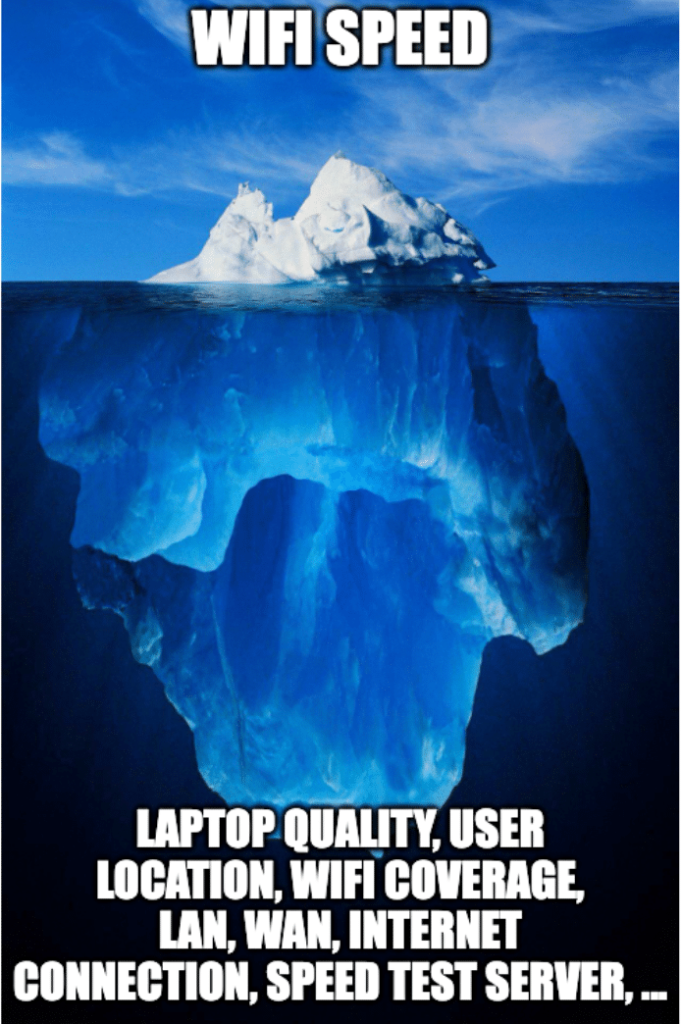WiFi Speed Test and Digital Experience
Why running WiFi Speed Tests?
On multiple occasions, I’ve come across individuals who express their dissatisfaction with a venue like a hotel or conference by sharing their WiFi speed test results as evidence. Given the rise in remote work, digital nomadism, and in-person events, such instances are becoming more prevalent. The truth is, conducting a WiFi speed test has become the ultimate benchmark for assessing network performance, be it for a personal internet connection, a hotel’s guest wireless network, or a conference venue. In a previous article, I covered speed tests in a broader context. However, in this piece, I aim to emphasize the key factors that should be taken into account when interpreting results specifically in a WiFi setting.
What’s Behind a WiFi Speed Result?
It’s important to understand that obtaining a poor WiFi speed result doesn’t automatically imply that the WiFi network itself is to blame and requires an upgrade. In reality, various factors contribute to an unfavorable WiFi speed test. These factors include the performance and load of both the client and server, the condition and efficiency of the underlying network infrastructure (including WLAN, LAN, and WAN), the quality of the internet connection, and, naturally, the strength and stability of the wireless signal.

One thing remains certain: end-users are not concerned with whether the issue lies with the WiFi, the internet, or any other technical aspect. What matters to users is receiving a reliable and satisfactory WiFi service. Consequently, providers of WiFi services should regularly conduct WiFi speed tests to ensure that their network meets specific criteria that fulfill the expectations of end-users.
Different Speed Test Options
It is crucial to acknowledge the existence of multiple speed test options that employ different strategies, potentially yielding varying results. I highly recommend referring to the article that compares different speed tests to gain further insights and determine which one(s) align most effectively with your specific needs.
The following three screenshots depict the disparity in results obtained by conducting speed tests using the same NetBeez WiFi monitoring sensor across three different service providers. The results were the following:
- Speedtest by Ookla, which is widely utilized by Internet providers and recognized by the general public, reported 70 Mbps down and 61 Mbps up.
- NDT by the M-Lab, which is also integrated with the Google search engine (do a simple search for “speed test”), reported 87 Mbps down and 44 up.
- Fast.com, which is maintained by Netflix and primarily tests the speed to its CDN network (in fact, by default, it just reports the download speed), reported 83 Mbps down.



Different results were obtained from the same providers when running WiFi speed tests with a NetBeez agent equipped with a WiFi version 6 card. The only commonality is that all tests reported an increase in both download and upload speed, as expected.



In essence, when performing speed tests in a WiFi environment, it is recommended to verify that the results exceed a minimum threshold for both download and upload speeds, while minimizing significant fluctuations. This should be the condition sufficient and necessary for supervising a WiFi service with speed tests.
How to Deal with Bad WiFi Results
When a network consistently produces unfavorable WiFi speed test results, it becomes crucial to break down the problem into subdomains for a more comprehensive analysis. For instance, you can begin troubleshooting by analyzing throughput between a WiFi client and its access point, perhaps running an iperf test. Then move southbound towards the next network portion, until you reach the Internet. Alternatively, you may opt for a bottom-up approach, commencing with the physical layer (Layer 1) and progressively advancing up to Layer 7 while resolving any problems encountered along the way.
Conclusion
In summary, interpreting WiFi speed test results and addressing potential issues requires careful consideration of various factors. Regular testing, understanding user expectations, and implementing effective troubleshooting techniques are essential for providing a reliable and satisfactory WiFi experience. The WiFi monitoring solution by NetBeez provides a simple yet effective way to easily verify and enforce speed test results.

